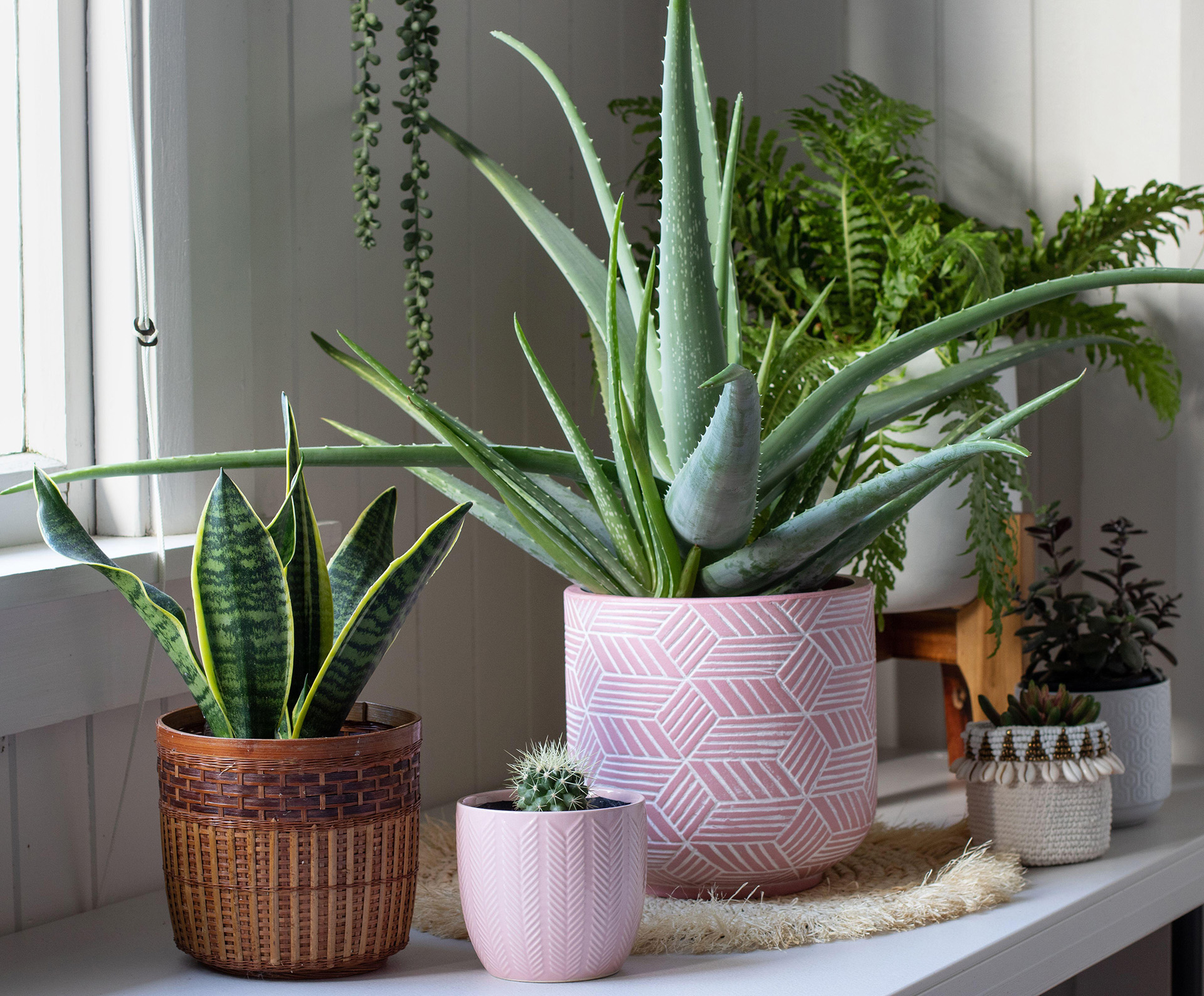Why is my aloe plant turning brown?
Find out why an aloe plant turns brown – and what to do when it does


Aloe plant turning brown? The gorgeous leaves of these popular plants can turn yellow and then brown and even become mushy and start to rot, so you’re not alone in encountering the issue.
But there are a few reasons why these succulent plants might lose their wonderful color and former good health, including those to do with watering, direct sunlight, and an excess of fertilizer.
We’ve put together a guide so you can identify the possible causes of your aloe plant turning brown and keep on enjoying the beauty of one of the best winter house plants for years to come.
Why is my aloe plant turning brown?
With good aloe plant care one of these sculptural beauties can stay healthy for years. But why does it stop thriving and the leaves turn brown?
‘The browning of the aloe vera plant may be due to a number of causes, such as dehydration, overwatering, fungal infection, or insect infestation,’ explains certified horticulturist Brody Hall, co-founder of The Indoor Nursery.
‘If the plant is not getting enough water, the leaves will turn brown and dry out. If the plant is overwatered, it will turn a dark-brown color and be very soft to the touch. A fungal infection can cause the leaves to turn brown and develop spots. Insects such as mealybugs or aphids can also cause the leaves to turn brown.’
Aloe plant turning brown due to overwatering
Overwatering is a frequent cause of aloe plants turning brown. ‘Aloe plants are fairly carefree, but like all succulent plants, they do not like wet feet,’ says American Society for Horticultural Science (ASHS) certified horticulturist Michele Chambliss of Perennial Garden Consultants. ‘Aloes will alert the gardener that they are not happy by turning brown.’
Design expertise in your inbox – from inspiring decorating ideas and beautiful celebrity homes to practical gardening advice and shopping round-ups.
‘Grow aloes in well-draining soil, whether outside in the ground or indoors, and allow soil to completely dry out between waterings,’ she says.
Follow the guidelines to keep the plant healthy. ‘Aloe vera plants prefer a soil pH of 6.0 to 7.0,’ says Brody Hall. ‘Aloe vera plants prefer soil that is sandy or gritty with good drainage. A succulent/cacti potting soil mixed with a touch of organics will suit an aloe vera plant just fine.’
As for an overwatered plant? ‘If the reason it turns brown is from overwatering generally the leaves will turn to mush and cause rot in the roots,’ explains Ayelet Faerman, co-founder of Verdant Lyfe. ‘If that happens I recommend cutting everything away that is rotting and allowing the plant to fully dry out before returning to a good watering schedule.’
Aloe plant turning brown from underwatering
While overwatering can turn aloe plants brown, be aware that underwatering can turn the tips of the leaves brown. So, how much water do they need?
‘We generally recommend watering aloe vera once every two weeks in the summer and once a month in the winter,’ says Ayelet Faerman.
Aloe plant turning brown because of the sun
An aloe plant could be turning brown because of exposure to the sun. ‘In extremely hot summer climates, aloes benefit from afternoon shade,’ says Michele Chambliss. ‘They tend to brown out in direct hot sunlight.
‘Either site aloes in a lightly shaded area of the yard, or relocate potted specimens to a place with morning sun, an east-facing porch or patio, for example. They usually will green up again, and often reward the gardener with blooming stalks of flowers.’
If you are growing the plant indoors, moving it to avoid direct sunlight through a window might be the answer to browning.
Aloe plant turning brown from an excess of fertilizer
An excess of fertilizer can damage the roots of an aloe plant eventually leading to browning leaves, so hold back.
‘Typically, aloe vera plants have very low nutritional needs only requiring fertilization every six to 12 months,’ explains Brody Hall. ‘A common NPK (nitrogen, phosphorus, potassium) rating of 0.5-1-1 will do the trick.’
Aloe plant turning brown due to pests and diseases
Pests are generally not a problem you’ll encounter as the owner of an aloe vera plant, but you could spot these nuisances on your plant. ‘As most areas of an aloe vera plant are easy to access, if an infection occurs, a quick blast with high-pressure water will removed most pests,’ says Brody Hall.
‘If this isn’t successful, wiping the plant with a sponge or cloth of soapy water will remove any particularly persistent pests.’
Fungal diseases, meanwhile, can cause brown spots on an aloe plant. These are often caused by overwatering, so use the recommendations above to help keep the plant free of disease.

Sarah is a freelance journalist and editor. Previously executive editor of Ideal Home, she’s specialized in interiors, property and gardens for over 20 years, and covers interior design, house design, gardens, and cleaning and organizing a home for Homes & Gardens. She’s written for websites, including Houzz, Channel 4’s flagship website, 4Homes, and Future’s T3; national newspapers, including The Guardian; and magazines including Future’s Country Homes & Interiors, Homebuilding & Renovating, Period Living, and Style at Home, as well as House Beautiful, Good Homes, Grand Designs, Homes & Antiques, LandLove and The English Home among others. It’s no big surprise that she likes to put what she writes about into practice, and is a serial house renovator.